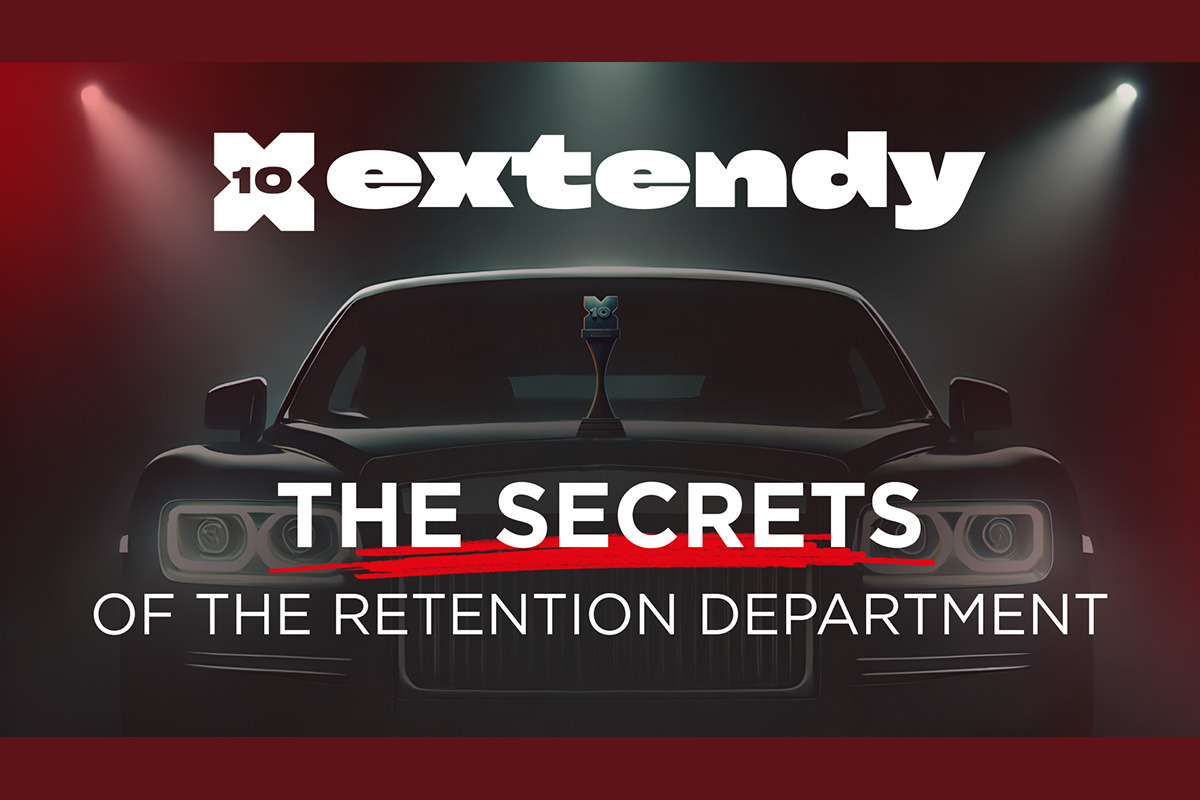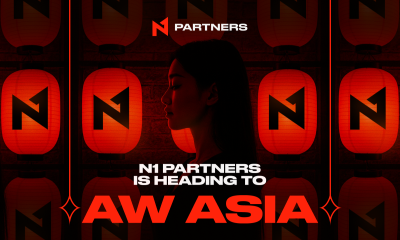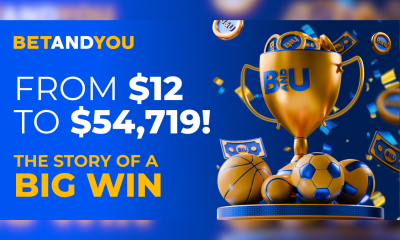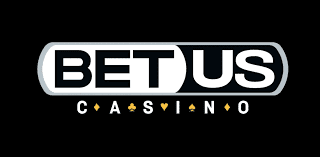Latest News
The Secrets of Extendy’s Retention Department: How Players are Retained and How a Casino Makes Money

Reading Time: 9 minutes
A casino’s retention department is a big player in an online casino’s operations.
Did you know…
Attracting a new player is far more costly than retaining one, and players who leave after placing their first deposit actually cause a casino to incur losses – with the cost of bringing them back being significantly higher than the FTD amount. This is why retaining players on a casino platform is a casino’s most important task. In fact, increasing customer retention by just 5% can lead to a 25% increase in profits.
Retention extends far beyond attracting and keeping players on one’s platform. It involves a fully-fledged, well-planned and well-executed strategy for turning ordinary users and First-Time Depositors (FTDs) into VIP clients who can bring in hundreds of thousands of dollars every month, as well as tactics of constant upsells.
In this article, Extendy’s Head of CRM dives deep into the retention department’s work. From how an ordinary player climbs the ranks from an FTD to a regular client and higher still, to the tools used each day by a retention department, and to why Free Spins don’t always cut it in traffic reactivation.
How and when does the retention process begin?
Traffic brought in by affiliates goes straight to the retention department as soon as a new player registers to the casino. It’s almost like a sorting center: at this stage, players are segmented and divided according to Tiers in order to set up targeted retention chains.

This data is the foundation in primary player segmentation, and allows casinos to create Welcome Packages for new players.
What is a Welcome Package and how does it work?
After a player registers and places their first deposit, they receive a bonus. The size of the bonus depends on the chain followed by the player.
For example: A new user makes a deposit, receives a Free Spin bonus, but ends up losing the entire amount. At this point, the “balance utilization” trigger is triggered – the player immediately receives a bonus offer for the next deposit. Each bonus comes with a wagering requirement that the user must use in order to withdraw the gifted amount.
The content now changes dynamically: after the bonus has been used, the player receives a subsequent, similar offer, several times. If the player does not respond though, the retention department will try to bring him back to the casino by giving him other, more generous, or more gamified offers. This way, the user is led smoothly along the welcome package funnel. Seeing the new player completing their welcome package as their first gaming session is the casino’s main aim.
The content of the welcome package depends on the partner, GEO, Tier level and traffic source. During a player’s first three deposits, the retention department would actually be analyzing the player’s likelihood of becoming a VIP client.
- How does the Retention Department Work with Players:

Once the Welcome Package – with its basic bonuses – has been used up, the player is assessed through his deposit history and over 30 other metrics. The retention department then forms forecasts and hypotheses based on all these factors. The user is then placed in a segment and is given a new retention chain. Segments can sometimes be combined within the same campaign: similar users can be treated using the same approaches and offered identical offers.
Metrics Used to Segment Players
Two main metrics are used:
- Payments. This is the player’s average monthly deposit amount. For example, John bet €200 in December, €100 in January and €300 in February. Therefore, his payment segment is €200.
- Player activity. This is how often a player visits the platform. Each player segment comes with activity tags, such as:

When retention campaigns are planned, player segments and their activity are taken into account. For instance, it is a normal behaviour pattern for a low-segment player to be absent on a casino site for 10 days, and platform resources will not be used for these users. However, if a VIP player does not visit the site for three days, a retention department will take prompt measures to invite him to return so as not to run the risk of losing a high-paying client.
The 5 Main Tools of a Retention Team
The CRM department determines communication channels with players depending on the payment and activity metrics, and communicate with the player using these five options:
- Push notifications;
- Pop-Up;
- E-mail;
- SMS;
- Calls.
Their effectiveness is analyzed based on technical and marketing indicators.
| Marketing | Technical |
| Click Rate | Open Rate |
| Conversion Rate | Delivery Rate |
Pop-Ups are one of the most effective communication channels. A pop-up appears while the player is still on the site. It’s a great tool for retaining users but it cannot reactivate them.
The effectiveness of emails and SMS depends on the GEO. For instance, the open rate of emails is high (40-50%) in Tier-1 countries, but low (only 10-20%) in Tier-3 countries. This is because PCs are used less often in Tier-3 countries, and sorting through emails from phones is considered inconvenient. Therefore, SMSs are the perfect channel for Tier-3 countries. Fortunately too, sending SMS messages in Tier-3 countries, unlike in Tier-1 countries, is very cheap.
When and Why are Players called?
Calls are used selectively in situations where only personal contact can bring a player back or increase their LTV. Therefore, a call center’s priority are VIP players, high rollers, dormant users and players with a high chance of churn. Calls can have different goals:
- To reactivate: if the player has stopped making deposits and has become dormant;
- To upsell: to offer an exclusive bonus or VIP program;
- To onboard a new high-potential player to the platform;
- To help with a problem if there are difficulties with payments or verification.
How calls work: The CRM department decides which players need to be called depending on their player behavior — frequency of casino visits, number and amount of deposits. The call will usually follow a script but depending on the player’s segment, the conversation will be conducted with flexibility. For example, a casino might want to establish a connection with a high roller by focusing on emotions and player status, saying something like: “We are holding an elite tournament among our top players. We’d love to see you among the participants!”
A Retention Chain involving a Call Center might look something like this:

The number of attempts to contact the user also depends on the player’s payment segment: an ordinary user would be contacted once or twice, but a VIP player will be contacted up to 5 times. If a player is clearly not interested, he will be removed from the database so as not to be bothered.
As online casinos operate in markets of different countries, call centers are multilingual and work with users from all target GEOs.
The Price of Tools, and Tracking Indicators
The following image compares the cost of different communication channels:

Each communication within one channel (Push/SMS/Email/ Calls) is assigned a UTM (Urchin Tracking Module) tag which allows you to see the promotions that produced results. The CRM department evaluates the costs of each campaign and its results through the number of clicks, and the amount and number of deposits. If the campaign turns out to be expensive and does not produce results, the retention department will change its strategy.
Player upsell
Retention is also focused on increasing casino revenue from each player, and trying to turn regular users into VIPs. Only taking action and trying to reactivate a player after he or she has already left the casino only results in a massive profit loss.
In a previous article, which you can read here, Extendy discussed VIP players at some length explaining how and why VIP players generate 45% of online casino GGR, and make up only 20% of the total number of players.
Extendy’s retention department creates a special promotional plan for active players taking into account factors like GEOs, and specific events like local holidays and paydays.
How it works. Let’s say a certain segment in a certain GEO has an average deposit amount of €40. As part of a promotional campaign to celebrate a local holiday, the player will receive a push notification along the lines of: “Today only, get 100% of your deposit when depositing €50 or more.”
The only players who are not upsold are the inactive ones. Rather, the approach to take when attempting to bring inactive players back to the site is to first, offer plenty of bonuses for a small deposit amount. When the player gets a taste for it and returns to the platform, he’ll be placed into a segment, and then, can be upsold.
Gamification: a Bonus Level for Advanced Players
An underrated tool in retaining and engaging online casino players is gamification. At Extendy, we implement gamification through a separate gamification module with a variety of mechanics:
- A specific bonus when picking from a set of three different slots;

- A scratch card where you need to uncover matches at certain intervals during gameplay;

- A shop where a player can buy Free Spins or receive bonus money on their balance;

- Lotteries and tournaments;

- Cashback and Rakeback: the user receives a percentage of the total balance amount and can withdraw it once a week. The cashback percentage is dynamic and depends on the active player. The rakeback percentage however, is always fixed;

- Dynamic Prize Egg: The player places bets and fills the scale to “crack open” the egg and receive a prize.

How it works. The player can be offered 100% of the deposit, or given a Free Spin on the Wheel of Fortune where a similar bonus will be won. If the player opts for the Wheel of Fortune the conversion rate will be higher than that of a regular bonus.
Gamification also allows for smooth onboarding on the platform. With new players, this involves a list of onboarding missions, such as completing the steps of verifying their email or phone number, making a deposit, or placing their first bet. Thanks to the game mechanics, the user would get a hang of the product and becomes motivated to play more often and place higher deposits, bringing profit to the casino.
Behavioural Analytics in Retention: How Data Drives Player Retention
The casino retention department doesn’t just hand out bonuses — it works with statistics. Deep player behaviour analysis allows casinos to not only retain players, but to also predict churn, select personalized offers, and increase LTV.
Predictive Analytics: Who’s going to leave the site?
All players leave a digital trace: through the frequency of their deposits, their choice of games, bet size, time between sessions… If a VIP player usually makes a deposit every two days, but is late one time, the system will send a trigger offer. However, if a low-tier player doesn’t log in for 10 days, he’ll likely be left alone.
Example. A player regularly places deposits of $100 every two days, but suddenly misses a payment. This is the first alarm signal. Three days later, the system sends him a push with a deposit bonus, and five days later, a personalised increased cashback offer by email. If there is still no reaction from the player, he is transferred to the risk segment and alternative scenarios are tested: SMS, VIP offers or exclusive bonuses.
Activity Heatmap: When Players Are Most Engaged
Let’s say that in some GEOs the peak of activity is on Friday evenings and Saturdays. Knowing this, the retention department will attempt to spark interest in advance by sending out push notifications with exclusive offers, activating special tournaments or launching personal quests.
Example. Analysis showed that most players in a certain GEO visit the casino on Fridays from 20:00 to 23:00. To increase the average amount spent on the site, three hours before the peak, players are sent a push notification along the lines: “Just for today we’re giving 100% back on your deposit.”
Triggers and Automated Scenarios
Retention campaigns are launched after careful planning, and each campaign is tied to specific behavioral metrics.

Example. If a player loses $50, instead of receiving a standard bonus, he’ll receive an offer to choose from a 50% deposit bonus, or 100 Free Spins on their favorite slot. This motivates the player to make a repeat deposit as his chances of winning back money are higher.
A/B Testing of Offers: Which Offers Work Best?
A 100% bonus on a deposit? 300 Free Spins? A Wheel of Fortune with prizes? The retention department tests different scenarios on different user segments to test which option would give the best conversions.
Example. A casino wants to understand what would work better for an audience in Tier-1 countries: a 10% cashback, or a 50% deposit bonus. Players are randomly divided into two groups, each receiving its own offer. After two weeks, the data is analyzed: which group made more deposits, which had a higher LTV. The best offer is scaled to the entire segment.
Conclusion
Retention in online casinos is not just a set of bonuses and standard tools, but a fully-fledged ecosystem. Retention will allow casinos to:
- Increase reg2dep conversion;
- Onboard new players with a welcome offer and gamification mechanics;
- Increase the average amount spent by players, conduct upsells and transfer players to VIP status;
- Notice and reactivate “dropped out” users and players at risk;
- Collect and analyze data for marketing campaigns in different GEOs.
A retention department worth its salt is able to extract the maximum from its existing player base resulting in generating the maximum revenue for the online casino and directly impacting GGR.
The post The Secrets of Extendy’s Retention Department: How Players are Retained and How a Casino Makes Money appeared first on European Gaming Industry News.
BGaming
Week 47/2025 slot games releases

Reading Time: 4 minutes
Here are this weeks latest slots releases compiled by European Gaming
Spinomenal has expanded its successful Mythology series with the launch of Mega Zeus Hold & Hit 3×3. Set among the golden columns of Mount Olympus, Mega Zeus transports players to the realm of the mighty god of thunder.

Galaxsys proudly announces the launch of its latest slot game, Guardians of Glory, an action-packed game that combines medieval warfare, innovative slot mechanics, and massive win potential for players worldwide. Blending classic slot mechanics with high-octane action, Guardians of Glory is a 5-reel, 3-row cascading line slot designed to keep players on the edge of their seats.

Evoplay has launched Imperial Relics: Three Pots, a vibrant new slot inspired by the grandeur, treasures, and mysticism of Imperial China. Players are transported to a golden city overseen by a wise emperor, where sacred relics and intricate symbols adorn the reels.

Relax Gaming has enhanced a fan-favourite with the launch of Snake Arena 2: Kinesis Unleashed. The futuristic, feature-packed 6×4 ways slot pits Slayers against Snake in an entertaining game experience that offers huge win potential with a maximum prize of 50,000x bet.

Get ready for the slot event of the year, from Booming Games, in Black Friday Cart Craze, where every spin feels like a mega sale! Load up your carts to trigger the Coin Craze collect feature or the Super Sale Spins, where everything must go. Eliminate Minor symbols and upgrade Major symbols to increase your shopping spree haul!

In Nolimit City’s latest release, Bizarre, peek into the window of Dr. Bizarre’s wild experiments. This slot falls under the eccentric category of Nolimit City slots such as Munchies, Outsourced and Ugliest Catch. The farm has been… busy. Bizarre plays out on a 4-4-4-4-4 layout across 5 reels, with a number of variations of xSplit®.

Push Gaming has launched its latest seafaring adventure, Sea of Spirits, a highly anticipated slot developed in collaboration with CasinoGrounds, one of the industry’s most influential community-driven streaming platforms. Set in a haunting underwater realm where ghostly captains guard the treasures of the deep, Sea of Spirits immerses players in a world of mystery, risk, and reward.


Play’n GO’s Stadium of Riches captures the raw energy of the world’s favourite sport, placing players at the heart of the action in this high-stakes football showdown. Stadium of Riches doesn’t just replicate the spirit of football – it elevates it.

Blueprint Gaming is kicking off the festive season with the launch of Saint Nicked 3 Present Tense, the first of three Christmas-themed releases that see some of its most iconic series reimagined with charming festive visuals, enriched graphics and immersive seasonal experiences designed to delight operator player bases worldwide.
is kicking off the festive season with the launch of Saint Nicked 3 Present Tense, the first of three Christmas-themed releases that see some of its most iconic series reimagined with charming festive visuals, enriched graphics and immersive seasonal experiences designed to delight operator player bases worldwide.

BGaming invites players to wrap up warm and explore an icy kingdom in Divine Queen: Heart of Ice. Watch the wins snowball in this Olympus-genre pay-anywhere game. Divine Queen: Heart of Ice pulls inspiration from the iconic Bonanza gameplay mechanics, repackaging them in a winter retro style.

This holiday season, Santa’s traded in his sleigh for a private jet and touched down on the Vegas Strip! Santa in Vegas delivers festive fun and flashy riches in a vibrant 5×4 slot packed with luxurious symbols, glittering lights and that famous Booming Games excitement.

Get ready to gather the family around the table and celebrate the harvest season in style in Extra Win X Thanksgiving – the new holiday-themed twist on Swintt’s classic retro slot formula where landing full table wins can lead to massively multiplied payouts.

TaDa Gaming has released Clover Ladybug, a vibrant slot where expanding Wilds, playful multipliers and the lucky ladybug herself lead the way to exciting 1500x wins. Set on a 5×3 grid with 20 paylines, Clover Ladybug transforms the simple joy of nature into a lively slot experience.

The post Week 47/2025 slot games releases appeared first on European Gaming Industry News.
European Gaming Media
HIPTHER’s European Gaming Media Joins Forces with Frank Gaming in a Strategic Media Partnership

Reading Time: 2 minutes
HIPTHER’s flagship media outlet, European Gaming Media, is delighted to announce a new Media Partnership with Frank Gaming – the strategic nexus connecting game providers, casino operators, and industry leaders worldwide.
This collaboration marks a shared mission to accelerate partnerships, amplify exposure, and empower sustainable growth within the global iGaming ecosystem. Through this agreement, Frank Gaming will feature HIPTHER’s renowned international events across its platform, providing its expansive network with direct access to some of the industry’s most influential conferences.
In exchange, European Gaming Media will provide ongoing editorial and social media coverage for Frank Gaming’s key announcements, while Frank Gaming representatives will receive complimentary passes to attend HIPTHER’s premium events, including the Prague Gaming & TECH Summit, European Gaming Congress (HIPTHER Warsaw Summit), and the MARE BALTICUM Gaming & TECH Summit.
A Partnership Built on Shared Vision and Reach
Frank Gaming serves as a powerful connector within the iGaming ecosystem, driving measurable results through strategic networking, exclusive events, and actionable industry intelligence. Their ecosystem features over 500 verified suppliers, 250 active operators, 1,200 successful connections, and 50+ exclusive events – all designed to foster collaboration and growth.
The platform’s comprehensive toolkit includes a Supplier Directory, Strategic Networking, Industry Intelligence, Exclusive Events, Custom Marketing, and Strategic Advisory services, making it a go-to destination for gaming businesses seeking to scale with purpose.
As a leading media voice reaching over 300,000 monthly readers, European Gaming Media delivers trusted news, interviews, and insights across gaming, betting, esports, and tech innovation. The partnership strengthens both brands’ commitment to building bridges and driving excellence across the gaming value chain.
Statements from the Partners
Zoltán Tűndik, Co-founder of HIPTHER, commented: Our collaboration with Frank Gaming is a natural fit, rooted in a shared commitment to strengthening the core of the iGaming industry. We are focused on delivering crucial insights, and Frank Gaming excels at creating actionable connections. With a joint effort we can offer immense value, ensuring that the critical discussions taking place at our HIPTHER events are amplified across their robust network of suppliers and operators.
Julian Arabadjiyski, Frank Gaming strategic advisor added: Partnering with HIPTHER is a strategic step forward in our mission to connect innovation with opportunity across the global iGaming landscape. HIPTHER brings industry-shaping insights and global reach through their events and media, while Frank Gaming empowers suppliers and operators to turn those insights into growth. Together, we’re bridging knowledge and execution ensuring the right voices are heard and the right connections are made.
About Frank Gaming
Frank Gaming is the strategic nexus connecting game providers, casino operators, and industry leaders across the global iGaming ecosystem. With over 500 verified suppliers, 250 operators, and 1,200 successful connections, the platform accelerates partnerships and drives growth through strategic networking, exclusive events, and targeted intelligence.
About European Gaming Media
Part of HIPTHER, European Gaming Media (EuropeanGaming.eu) is one of the most trusted publications in the iGaming and gambling sector, reaching more than 300,000 readers monthly. The outlet delivers daily news, in-depth interviews, regulatory updates, and event coverage, shaping the future of gaming and betting across Europe.
About HIPTHER
HIPTHER is a global brand dedicated to connecting people and businesses through innovative media, PR, and events. With leading conferences and media outlets spanning Gaming, Tech, and Fintech, HIPTHER empowers industries through connection, collaboration, and creativity.
The post HIPTHER’s European Gaming Media Joins Forces with Frank Gaming in a Strategic Media Partnership appeared first on European Gaming Industry News.
Latest News
N1 Partners at Affiliate World Asia 2025: The Place Where Top Deals Come True

N1 Partners is heading to Bangkok to talk about growth, partnerships, and high-converting products. The team will be present not only at the main conference — Affiliate World Asia 2025 on December 3–4 — but also across the key side events, including Affiliate Drinks Meetup Bangkok 2025 and partner activities at Fridman Palace.
“Affiliate World Bangkok is one of the most valuable events of the year. We’re excited to meet partners, showcase what we’ve built, and exchange insights that drive the industry forward. N1 Partners enters 2026 stronger than ever — with new brands, new achievements, and big plans ahead.”
— Alexa Bond, Head of Affiliates at N1 Partners
Meet N1 Partners at Affiliate Drinks Meetup Bangkok 2025
The Affiliate Drinks Meetup Bangkok 2025 by Conversion Club is an evening of targeted networking during Affiliate World Asia week — a “drinks & deals” format built for quick, meaningful introductions and real partnerships between affiliates, advertisers, agencies, and tech partners in a relaxed setting off the expo floor.
N1 Partners joins Affiliate Drinks Meetup as a supporting partner and active participant, bringing our affiliate managers to meet decision-makers, discuss new traffic opportunities, and strengthen relationships with existing and future partners.
- Location: Anantara Siam Bangkok Hotel, Bangkok
- Date & time: 3 December 2025, 20:00–23:00
Affiliate Space Awards 2025
The Affiliate Space Awards 2025 by Conversion Club is an annual gala that celebrates standout brands, companies, and personalities in affiliate marketing across key verticals — including iGaming, finance, dating and more — with live voting and winners announced at a gala dinner in Bangkok.
N1 Partners is shortlisted in three major categories at the Affiliate Space Awards 2025:
- The Best Gambling / Betting Affiliate Program
- The Best Brand of the Year
- The Best Online Casino Operator of the Year.
Together, these nominations recognize N1 Partners’ position as a top-performing affiliate program and operator with guaranteed and fast payouts, flexible deal models, a VIP approach and strong support for partners, consistently high-converting Tier-1 brands, a strong and consistent brand image (boosted in 2025 by the buzz around the N1 Puzzle Promo), and a data-driven approach to player value, retention, LTV, and long-term partner results.
- Location: Anantara Siam Bangkok Hotel, Bangkok
- Date & time: 4 December 2025, 20:00–23:00
Fridman Palace – where N1 Partners meets industry leaders
You can also find N1 Partners at Fridman Palace in Bangkok — a premium business and lifestyle space where market leaders meet, share real cases, and talk openly beyond the conference schedule.
FridmanTower offers a curated environment with private meeting areas and networking zones tailored for meaningful conversations and high-level deal-making.
N1 Partners is the sponsor of a smoking lounge for relaxation and networking, giving partners a comfortable, premium space to meet our affiliate managers, talk strategy, and plan next steps throughout Affiliate World week.
- Location: FridmanTower, Bangkok
- Dates: 1–5 December 2025
Book a Meeting with Our Affiliate Managers
Maximize your time in Bangkok — book a meeting with N1 Partners in advance, whether at Affiliate World Asia, Affiliate Drinks Meetup, Affiliate Space Awards, or Fridman Palace.
Meet the N1 Partners affiliate team in Bangkok:
- Aleksei Gusarov – Team Lead of Affiliates
- Viktoriia Sokolenko – Affiliate Manager
- Roman Tsyganov – Affiliate Manager
- Batikhan Omarbayev – Affiliate Manager
- Pavel Sysoev – Account Manager
Book your slot — let’s talk business, growth, and opportunities with N1 Partners.
About N1 Partners
N1 Partners is a multi-brand affiliate program and direct advertiser, uniting 14+ casino and betting brands. The company has a strong presence in 10+ Tier-1 GEOs, Reg2Dep rates of up to 70%, and a trusted network of 10,000+ affiliates worldwide. N1 Partners delivers competitive deals for top partners: CPA up to €700 and RevShare up to 45% to ensure partners always are number one!
-

 Bogdan Smeu4 days ago
Bogdan Smeu4 days agoCT Interactive Expands In Romania with New Game Launch on Maxbet.ro
-

 Amusnet4 days ago
Amusnet4 days agoAmusnet to Participate in BEGE 2025
-

 Latest News4 days ago
Latest News4 days agoFrom $12 to $54,719: The Story of a Big Win at Betandyou!
-

 gambling companies4 days ago
gambling companies4 days agoSpelinspektionen: Gaming Companies with Swedish Licenses Had a Turnover of SEK 6.7 Billion During the Third Quarter
-

 Latest News3 days ago
Latest News3 days agoNot Just Games. Experiences: Interview with Gabor, CPO at DreamPlay
-

 Asia2 days ago
Asia2 days agoPRONET GAMING BECOMES FIRST B2B OPERATOR TO ESTABLISH SCBPO ACCREDITED OPERATION IN THE PHILIPPINES VIA CLAYMORE SOLUTIONS
-

 Betting6 days ago
Betting6 days agoNHL Betting Sites: BetUS Ranked First for NHL Betting
-

 Other OTC:TBTC7 days ago
Other OTC:TBTC7 days agoTable Trac, Inc. Reports 2025 Third Quarter Earnings











